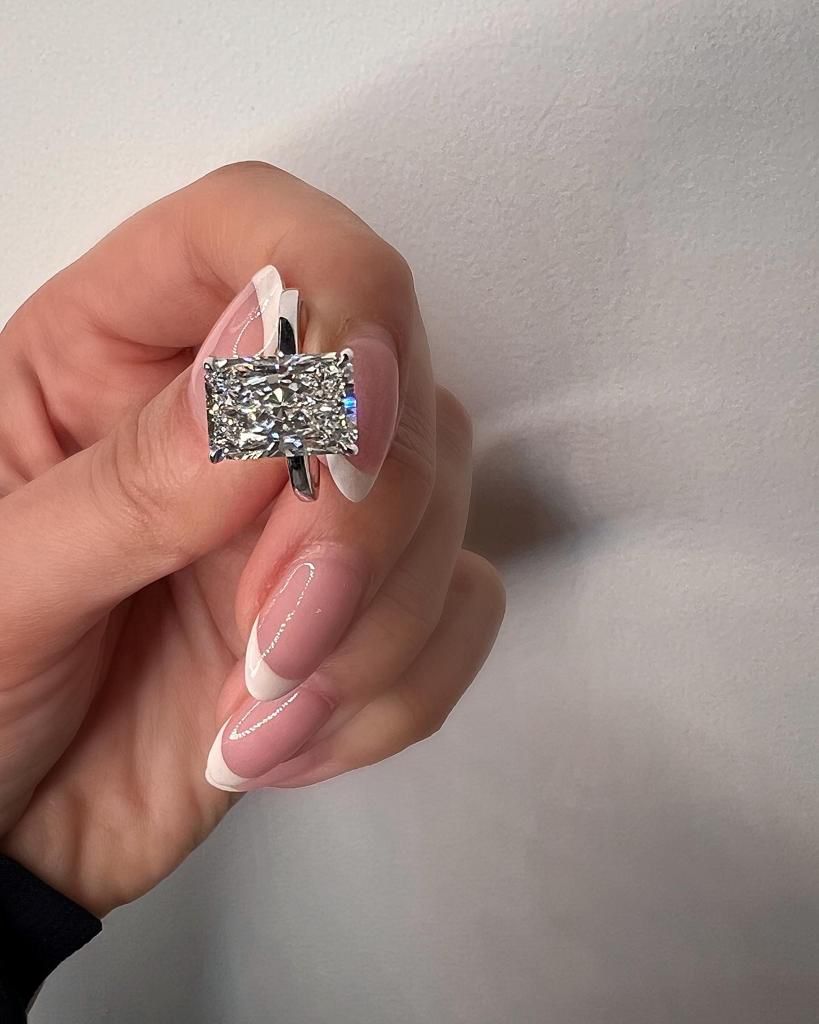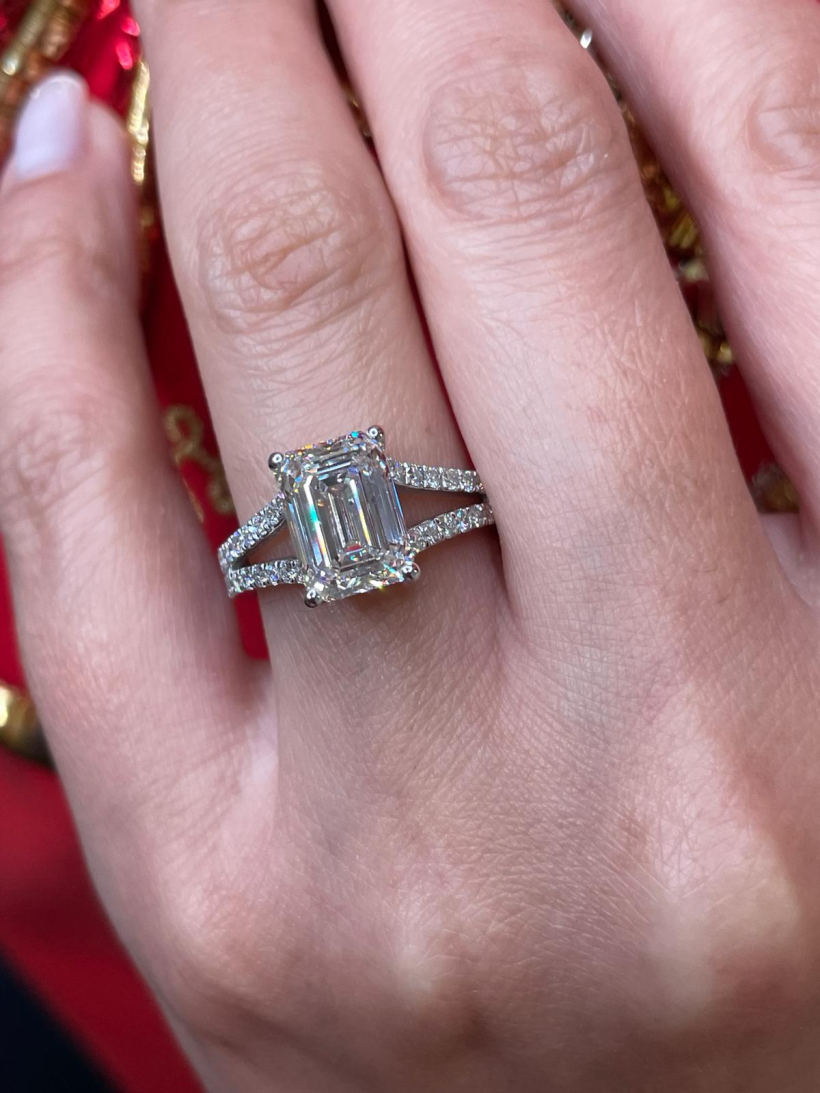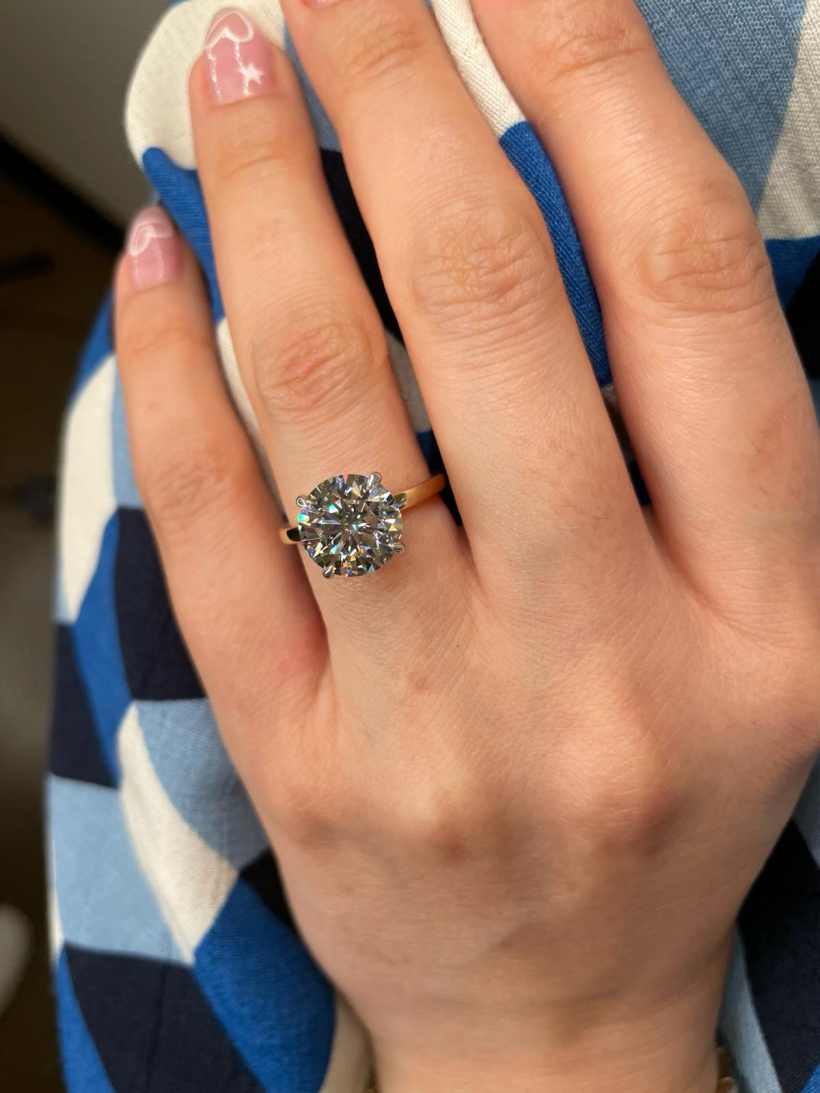If you’re shopping for an engagement ring, you’re going to have to learn some of the lingo. While diamond carats and cuts are pretty straightforward, color and clarity can be a little more nuanced. Nonetheless, understanding color and clarity diamond grades is vital if you want to find something that matches your style and your budget.
But what is diamond clarity? How do diamond grading experts rank different colors? How do color and clarity affect diamond quality? Finally, where can you find high-quality diamonds at affordable prices?
In today’s guide, we will answer all of these questions and more, so let’s get started!
What Are The Diamond Colors?
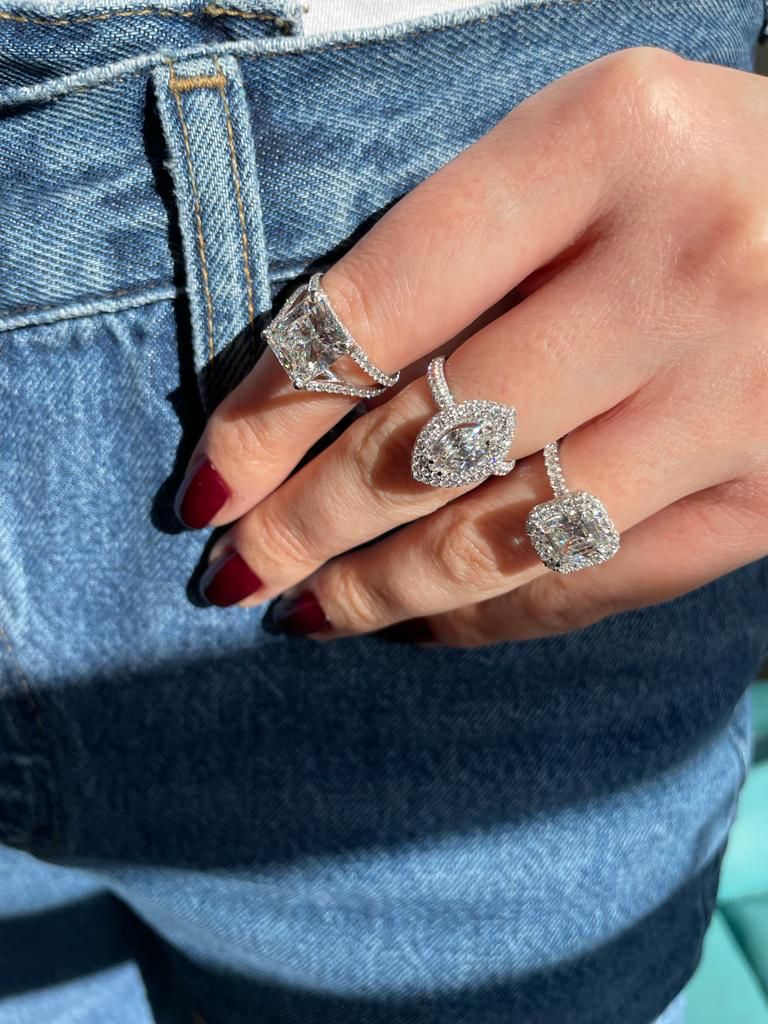
Oddly enough, “diamond color” ratings actually pertain to the absence of natural color in a diamond. This is why the scale begins with colorless diamonds and goes all the way up to diamonds with yellow or brown coloration. The standard set by the Gemological Institute of America (GIA) defines color using a graded scale beginning with the letter D. Here is what the different letter groups in the diamond GIA color scale refer to:
- D through F - On the diamond color scale, the letters D, E, and F all refer to diamonds that are virtually free of any color, with D being the “best” in this category. Colorless diamonds are often some of the most expensive and sought-after. And while there are definable differences between D, E, and F-graded diamonds, these differences would only be recognizable to a trained gemologist.
- G through J - The letters G, H, I, and J all fall into the “near” colorless category. As the name implies, near-colorless diamonds do have a faint presence of color, though the color will likely not be visible to the naked eye. Near colorless diamonds are great if you want to find a good balance between quality and cost.
- K through M - Diamonds designated with the letters K, L, or M have a faint yellow or brown coloration. This faint coloration is typically visible to the naked eye, though it will still take sharp vision and close scrutiny to notice. Diamonds with K, L, or M ratings are typically more affordable, though the cost will still depend on the cut, carat, and clarity of the gemstone.
- N through R - The letters N, O, P, Q, and R all indicate very light coloration. This is generally yellow or brown coloration that is more visible than diamonds with K, L, or M ratings. As far as color goes, the “very light” designation is generally considered lower quality, which often means that you can acquire a larger diamond at a more affordable price.
- S through Z - Finally, the letters S, T, U, V, W, X, Y, and Z refer to diamonds that have a distinct yellow or brown coloration. While the color will still be relatively light, it will be immediately noticeable, even to the untrained eye. But unlike colorless diamonds, the differences between an “S” diamond and a “Z” diamond can be substantial. For instance, an “S” diamond might have a pretty light yellow tint, while a “Z” diamond may have a somewhat strong yellow or brown coloration. In any case, diamonds that fall within this range tend to be seen as lower quality, and therefore may cost less.
Fancy Color Diamonds
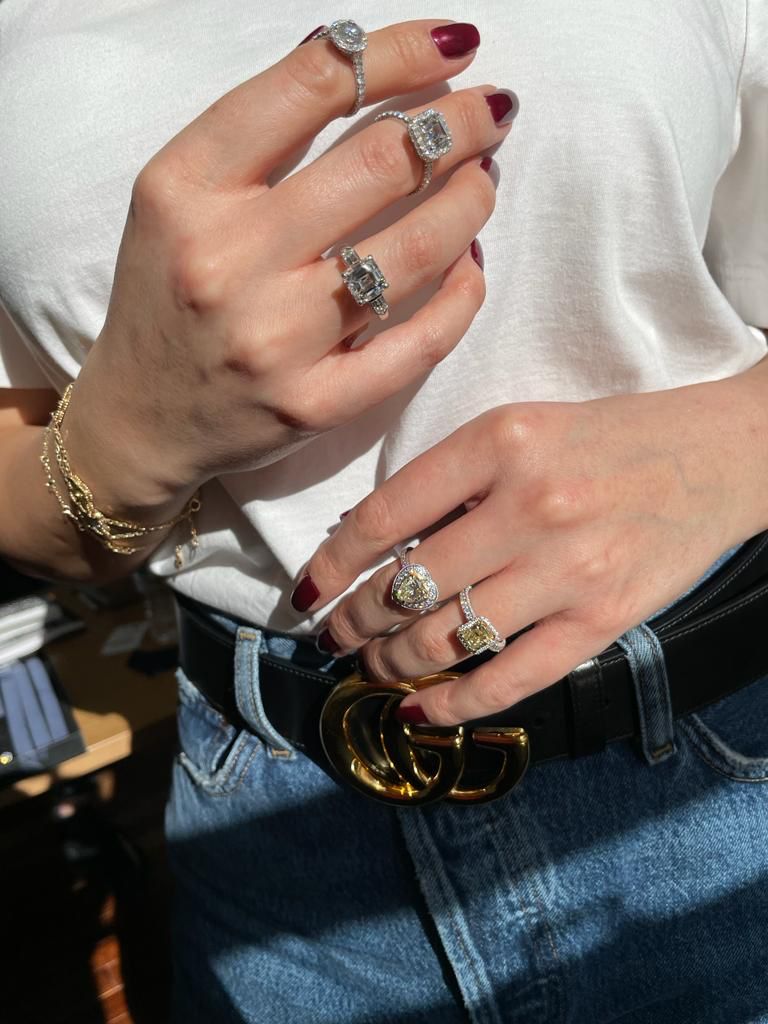
Thus far, we have only talked about natural diamonds that commonly feature a light brown tint, a yellow tint, or no coloration at all. However, there are also diamonds that have very intense colors. These are known as fancy color diamonds. Though fancy colors are technically the result of impurities, these diamonds are extremely rare, beautiful, and expensive.
Since fancy color diamonds do not adhere to the same “rules” as diamonds on the D-Z color scale, they are often rated using a different grading system. More specifically, the GIA grades fancy color diamonds based on the visible color, the tone, as well as the saturation (i.e. the strength of the color).
Here are some of the most popular types of fancy color diamonds:
- Yellow Diamonds (also known as Canary Diamonds)
- Blue Diamonds
- Pink Diamonds
- Red Diamonds
- Green Diamonds
- Brown Diamonds (also known as Cognac Diamonds)
- Black Diamonds
Some of the most famous diamonds in the world feature fancy colors. For instance, the Hope Diamond is blue, while the famous Dresden Diamond is green. But if you want one of these, you might need to shell out millions at auction!
What Is Diamond Clarity?
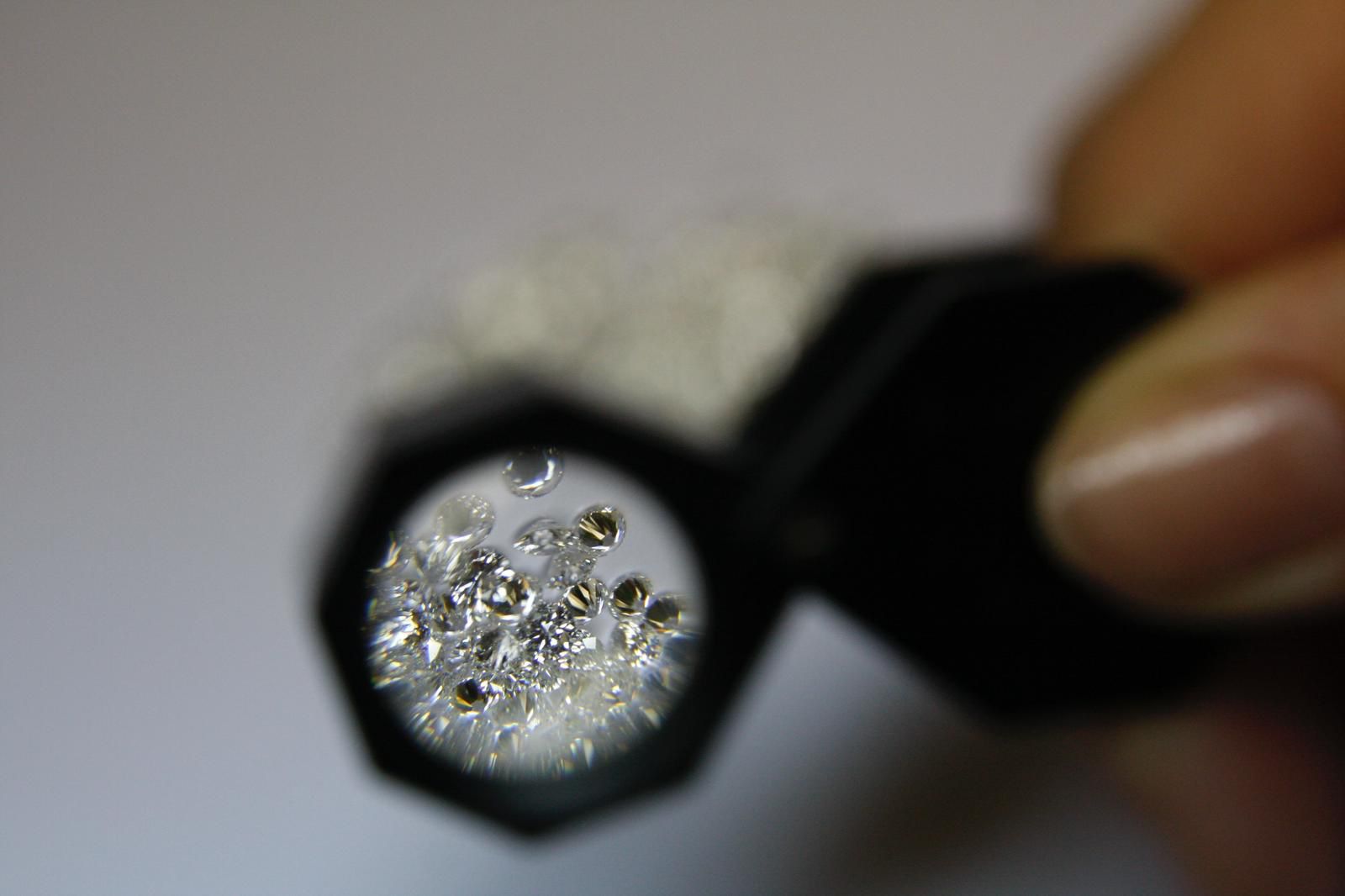
When looking at the 4 C’s of diamonds (clarity, cut, color, and carat), clarity is often the most misunderstood. Many people think of clarity as how “shiny” a diamond is, but this isn’t the case. While clarity definitely plays a role in the brilliance or shininess of a diamond, the cut is just as important (if not more so).
When gemologists or jewelers talk about clarity, they are actually referring to the absence (or presence) of inclusions. An inclusion is a physical imperfection or flaw in the structure of the diamond itself. Some common examples of inclusions might be internal scratches, crystals, clouds, blemishes, or chips. Since inclusions can interfere with light passing through the diamond, and therefore make the diamond less brilliant, their presence can make a diamond substantially less valuable.
As it does with color, the GIA uses a specific clarity scale to grade diamonds:
- Flawless - A flawless diamond has no inclusions that can be seen at 10x magnification.
- Internally Flawless - An internally flawless diamond has no internal inclusions visible at 10x magnification, but it may have one or more external blemishes.
- Very, Very Slightly Included - This rating is typically divided into two categories: VVS1 and VVS2. A VVS1 diamond has inclusions that are very difficult to see at 10x magnification, while a VVS2 diamond has inclusions that are slightly easier to see at the same magnification.
- Very Slightly Included - Again, this rating is divided into two categories: VS1 and VS2. A VS1 diamond has minor inclusions that might be difficult to see at 10x magnification, while a VS2 diamond has minor inclusions that may be a little more visible.
- Slightly Included - The Slightly Included rating is also divided into two categories: SI1 and SI2. An SI1 diamond has noticeable inclusions at 10x magnification and an SI2 diamond has inclusions that are a bit more apparent at the same magnification.
- Included - Finally, Included is divided into three categories: I1, I2, and I3. An I1 diamond is very similar to SI2, though the inclusions may be a little larger or more visible. An I2 diamond has even more visible inclusions under magnification, and an I3 diamond has substantial inclusions that might even be visible to the naked eye. Included diamonds tend to be the least valuable, as their inclusions are more prominent and therefore more likely to negatively impact the brilliance of the diamond.
What Is A Good Diamond Clarity?
Obviously, flawless is the best diamond clarity, but it is extremely rare. In fact, less than 1% of diamonds are considered flawless or internally flawless. And, since these diamonds tend to be extremely expensive, it’s often best to find a clarity that balances quality with value. Generally, anything between a VS2 and a VVS1 is still considered very good quality and will be easy to find on the open market.
It’s also important to keep in mind that most diamonds do not have inclusions that you’ll be able to see without a strong magnifier. So, if you want to get a good diamond without breaking the bank, you should opt for an Included or Slightly Included gemstone. It may not be quite as “shiny” as less included diamonds, but it will still look great on your finger!
How To Get A Good Diamond For An Affordable Price
Do you want to get a beautifully-colored diamond with a high clarity rating? Are you shopping for a diamond on a budget? If so, your budget doesn’t need to cancel out your preferences. By acquiring a used or pre-owned diamond from HYSTR, you can pay a fraction of the cost while still enjoying the quality you want and deserve!
We hope you enjoyed our diamond color and clarity ratings guide! Are you currently trying to buy or sell a used engagement ring? If so, be sure to contact HYSTR today!





